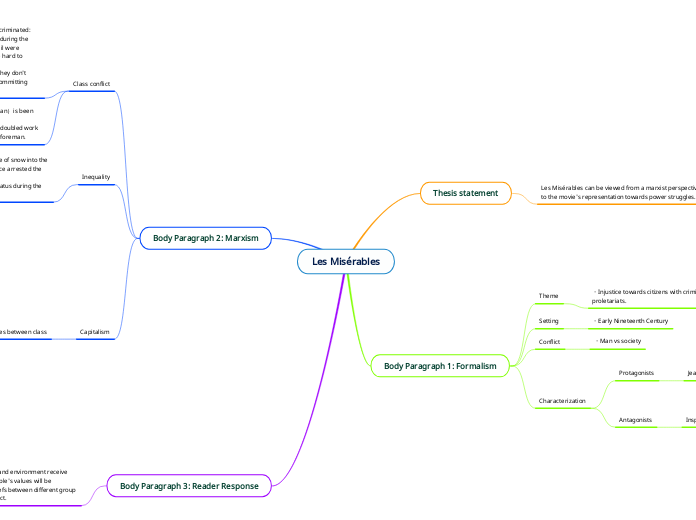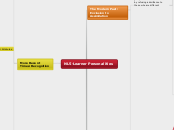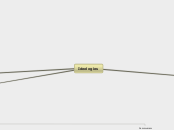Les Misérables
Body Paragraph 3: Reader Response
・People living in different classes and environment receive different education. Therefore, people's values will be different. When the values and beliefs between different group is too large, it will cause class conflict.
Body Paragraph 2: Marxism
Capitalism
Exploiters expand the power struggles between class
Mentally: Values
Jean Valjean vs Javert
Javert:
・Grew up in jail(making him hate criminals)
・Never felt love from anybody(gives him a ruthless and cruel characteristic).
・In his perspective, there's only two type of people on the earth: People who attack society and those who defend society. The "criminals" are the "attackers", they can never become good people. In the movie, he represents the official class. He had an opposite value with Jean Valjean.
Jean Valjean:
・Youth spent in prison because of stolen a bread.
・He felt discriminated from the people when he was released from jail, and he started to hate all the people in the society.
・ A bishop saved his soul by preventing him to be send in jail, and he started to be a good person again.
In the movie, Jean Valjean represent the lower class. His beliefs were opposite with Javert.
Physically: Exploitation
・Jean Valjean is in jail for 19 years just because he stole a piece of bread to satisfy his hunger. After his release, he lost all his family members. In fact, due to the less income of the lower class families, his earnings does not even support the price of a bread.
・This shows the exploitation from the high class. The lower class can not survive in this case.
Inequality
・a rich second generation stuffed a large pile of snow into the waistcoat of a thinly-dressed girl, and the police arrested the girl instead.
・This shows that the lower class has a low status during the revolutionary France.
Class conflict
・In the movie, when the protagonist(Jean Valjean)is been released from the jail.
・He worked as a porter for a day. Even he does doubled work than others, he only got half of the paid form the foreman.
・People who have been in prison have been discriminated:
From the perspective of the 19th century people during the revolutionary France, people who have been in jail were hopeless, and the beliefs of the antagonists were hard to change.
・Hence, when criminals are released from jail, they don't have the opportunity to work, resulting in them committing another crime for survival.
Body Paragraph 1: Formalism
Characterization
Antagonists
Inspector Javart
・Born in prison
The offspring of the prisoner
Symbolizes the morbid social order at that time
The paranoid who maintains backward and corrupt law and order
Protagonists
Jean Valjean
・Symbol of kindness and fraternity
・Representatives of the toiling people who are oppressed, damaged, and humiliated
Conflict
・Man vs society
Setting
・Early Nineteenth Century
Theme
・Injustice towards citizens with criminal records or the proletariats.
Thesis statement
Les Misérables can be viewed from a marxist perspective due to the movie's representation towards power struggles.
thirdly, the socially injustifiable policies create by the exploiters expand the power struggles between class.
secondly, the lower class can not survive under the exploitation from upper class
Firstly, criminals have less opportunities of job placement after their release from the jail due to the social norms of the discrimination towards criminals









